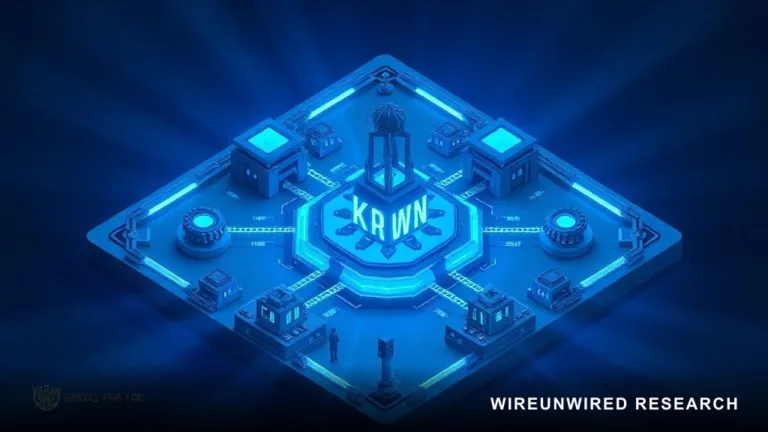In 2024 WireUnwired had published a report on 3 Reasons Why Semiconductors are Driving Big Geopolitics and today it is coming True. The race to build a resilient chip supply chain is redefining global industrial policy, and India is trying to position itself as the next big semiconductor hub. Over the past three years, the Indian government has announced a $10 billion incentive package, pitched India as a competitive alternative to Taiwan and South Korea, and secured high-profile commitments from Micron, Tata, Vedanta-Foxconn, and others.
But the picture on the ground tells a mixed story. Some projects are advancing, others are stalled, and a few remain little more than press releases. This raises a pressing question: is India truly on its way to becoming a semiconductor hub, or are we once again mistaking promises for progress?
List of Announced Semiconductor Projects in India as of 2025.
As of 2025 in India over more than 6 semiconductor projects are in Talks .Given below is the complete list of the projects , their location , year of announcement , their progress as of now and what are they focusing on.Table 1: Major Semiconductor Projects in India (2025)
| Project / Company | Location | Announced | Investment | Status | Notes |
|---|---|---|---|---|---|
| Tata–PSMC Fab | Dholera, Gujarat | 2024 | ₹91,000 cr (~$10.4B) | Approved; prod. 2026 | Flagship wafer fab |
| Micron ATMP | Sanand, Gujarat | 2023 | $2.75B | Under construction | First large OSAT |
| Vedanta–Foxconn Fab | Gujarat | 2022 | $19.5B | Stalled; Foxconn exited | New partner needed |
| SiCSem Fab | Bhubaneswar, Odisha | 2025 | Not disclosed | Approved | India’s first SiC fab |
| Tata OSAT | Jagiroad, Assam | 2025 | ₹27,000 cr | Approved | Packaging hub |
| HCL–Foxconn JV | Jewar, UP | 2025 | ₹3,700 cr (~$435M) | Production by 2027 | Display driver fab |
| Kaynes Semicon | Sanand, Gujarat | 2025 | ₹3,300 cr (~$394M) | Approved | Small fab (EVs, telecom) |
| CG Power–Renesas–Stars OSAT | Sanand, Gujarat | 2025 | $222M | Pilot 2025, full 2027 | Japan/Thailand tie-up |
Together, these projects represent commitments of over ₹1.6 lakh crore (~$18B). Yet while Micron and Tata are moving ahead, Vedanta’s stalled fab and other early-stage projects remind us that India’s execution record remains uneven. Importantly, we can also see a clear trend — most of these projects are clustering in Gujarat. Opposition parties in India have already raised questions about whether there is a political angle to this, given Gujarat’s status as the Prime Minister’s home state, or if it is simply the outcome of stronger industrial policy and infrastructure readiness in the state.
The Policy Backdrop: Indian States are fighting for becoming Semiconductor manufacturing hubs , But Gujarat is leading …..
India’s semiconductor ambition rests on one of the world’s most generous incentive schemes. In 2021, the government unveiled a $10 billion semiconductor package under the India Semiconductor Mission (ISM), designed to
The aim: reduce import dependence, attract global majors, and give India a foothold in the global chip race.
But where these fabs and packaging facilities will eventually go is not in the hands of the Centre alone. States are now fiercely competing to bring in these capital-intensive projects with their own top-up incentives. Among them, Gujarat has taken a decisive lead, setting the benchmark with extra subsidies, cheaper utilities, and ready-to-use industrial corridors.
Here is the complete list of the various incentive offerings from different states of India.
Table 2: State-Level Incentives for Semiconductor Fabs in India
| State | Special Incentives & Benefits | Positioning |
|---|---|---|
| Gujarat | Up to 40% extra capex, cheap utilities (10 yrs), single-window clearance | India’s semiconductor capital |
| Assam | Land security, fast clearances, connectivity | First NE state with facility |
| Odisha | First-mover packages, relocation support, workforce incentives | Compound semiconductor hub |
| Uttar Pradesh | Quick land, infra near NCR, supply chain proximity | Expanding chip map northward |
| Andhra Pradesh | Incentives for packaging, R&D clusters | Emerging packaging hub |
| Punjab | Support for Si & SiC power devices | Power semiconductor focus |
Given that how much incentives Gujarat is providing to the semiconductor manufacturers , undoubtedly the manufacturers are moving towards Gujarat.
Where does India stands in the Global Semiconductor Landscape ?
India’s semiconductor ambition is unfolding in the middle of a global chip race where the scale of investment is staggering. While the U.S., EU, Taiwan, Korea, and China are focused on securing advanced-node dominance, India is trying to build its foundation in mature fabs, packaging, and niche areas like SiC.
Expanded Data: India’s Semiconductor Sector in Global Perspective (2025)
Market Size & Growth
India’s semiconductor market:
- 2023: $38 billion
- 2024–2025: $45–50 billion
- 2030 (projected): $100–110 billion which is roughly contributing to 10% of Projected Global semiconductor market i.e $1 trillion by 2030
Table 3: Global Semiconductor Incentives vs. India (2025)
| Country/Region | Incentives | Key Projects | Positioning |
|---|---|---|---|
| United States | $52B (CHIPS Act), tax credits, R&D | Intel, TSMC, Samsung, Micron fabs | 3nm prod. by 2025–26 |
| China | >$150B “Big Fund”, fab subsidies | SMIC, YMTC, dozens of fabs | Mature nodes, packaging |
| European Union | €43B Chips Act + subsidies | Intel Magdeburg, Bosch, STMicro | Double share to 20% by 2030 |
| Taiwan & Korea | Billions yearly (R&D, talent, infra) | TSMC global fabs, Samsung | Defending advanced nodes |
| India | $10B ISM + state top-ups | 10 projects (~₹1.6 lakh cr) | Mature nodes, OSAT, SiC focus |
Clearly ,Globally, India’s $10B pool is modest:
- U.S.: $52B (CHIPS Act), Intel/TSMC/Samsung fabs producing 3nm by 2025–26.
- China: >$150B “Big Fund,” dozens of fabs, strength in mature nodes despite sanctions.
- EU: €43B, Intel’s €30B Magdeburg fab, target to double share to 20% by 2030.
- Taiwan/Korea: Billions annually, TSMC & Samsung defending advanced-node lead.
As far as i am seeing India’s approach is different: focus on mature-node fabs, OSAT/ATMP, and SiC niches which can fulfil Its domestic market ,projected to grow from $38B in 2023 to $100–110B by 2030
India specific policy collaborations and Strength and Oppurtunities..
Policy Collaborations
- India–EU MoU: Joint R&D, supply chain resilience, talent sharing.
- India–US Partnership: Tech transfer & sectoral assessment under the U.S. State Department.
- Other Agreements: Singapore, Germany, UK — focused on R&D, design clusters, and workforce training.
Strengths & Opportunities
- Demand pull: automotive, telecom, renewables, defense.
- MSME base: capable of supplying ancillaries, equipment, and materials.
- Strong push into OSAT/ATMP facilities and compound semiconductors.
- Weakness: incentive pool is still modest compared to U.S./China; execution timelines risk delays.
My View: Between Promise and Reality
India’s semiconductor journey has moved forward in real terms — Tata’s fab in Gujarat, Micron’s ATMP facility, and Odisha’s SiC project show that execution is finally beginning. For the first time, India has more than a handful of serious projects approved or under construction.
But the risks are just as real. Fabs are complex, resource-intensive, and dependent on supply chain ecosystems that India is still building. Timelines can slip, and cost overruns are likely.
The clustering of projects in Gujarat has sparked political debate. Opposition parties question whether politics is driving location choices. My view: while politics can’t be ruled out, Gujarat has built the strongest industrial corridors and offered the most competitive incentives, which explains its lead more than favoritism.
Globally, India is still a small player compared to the U.S., China, or the EU. Its strength will not come from chasing 3nm fabs but from specializing in mature nodes, packaging, and compound semiconductors where demand is booming in EVs, telecom, and renewables.
Discover more from WireUnwired Research
Subscribe to get the latest posts sent to your email.




